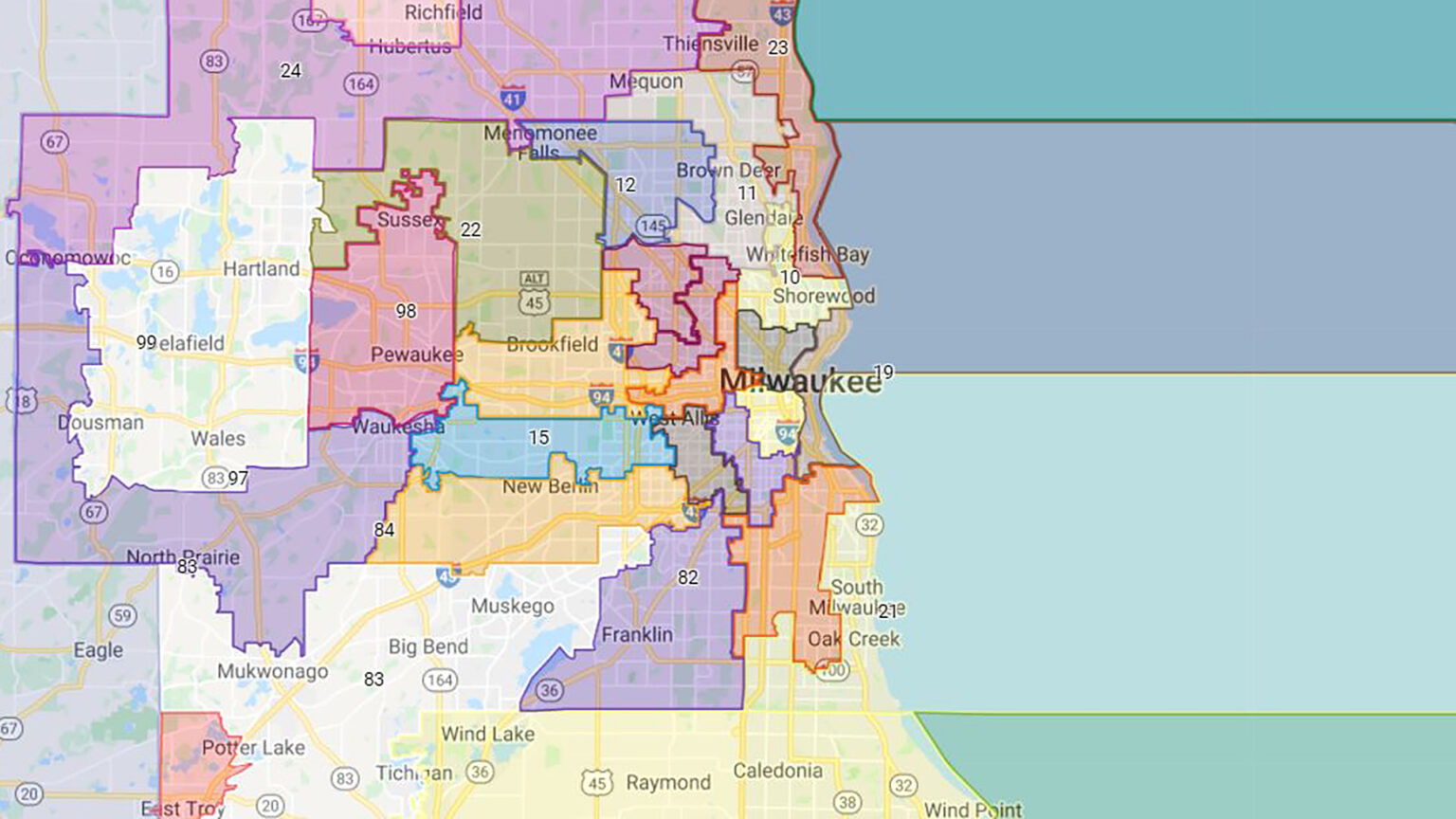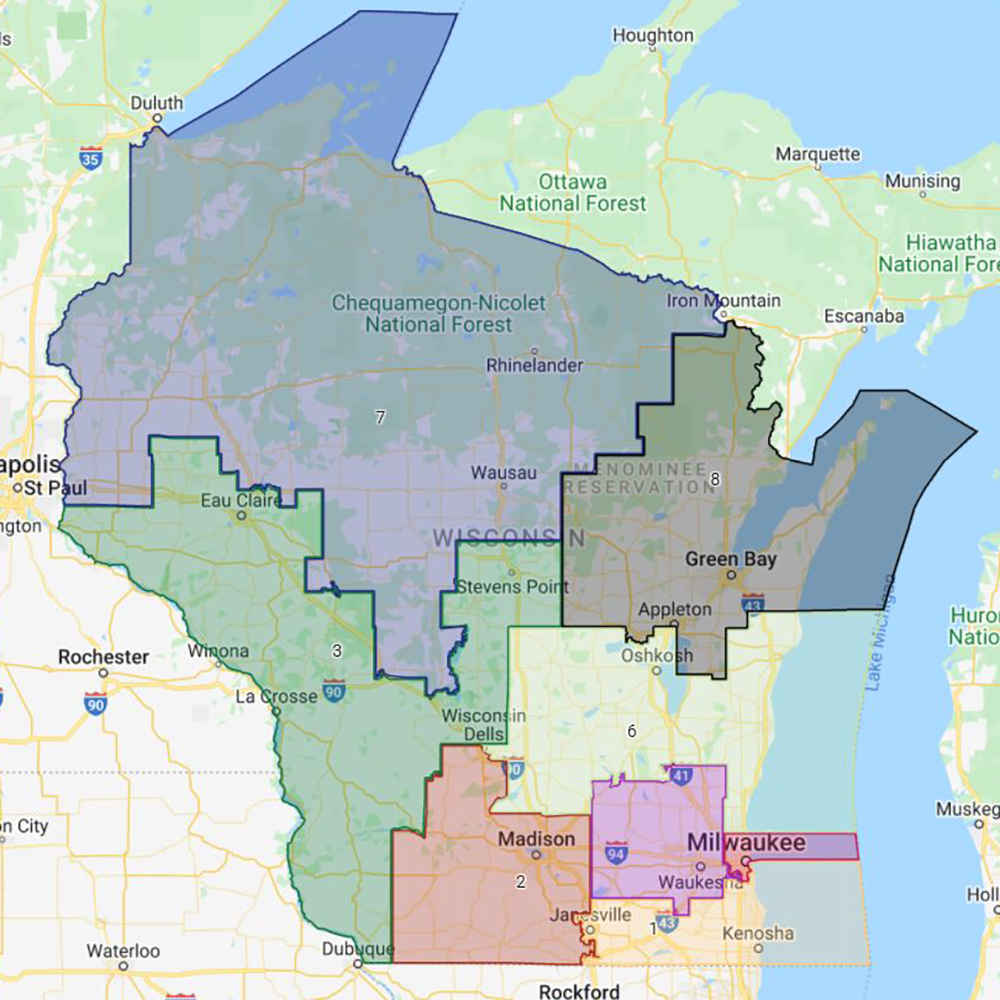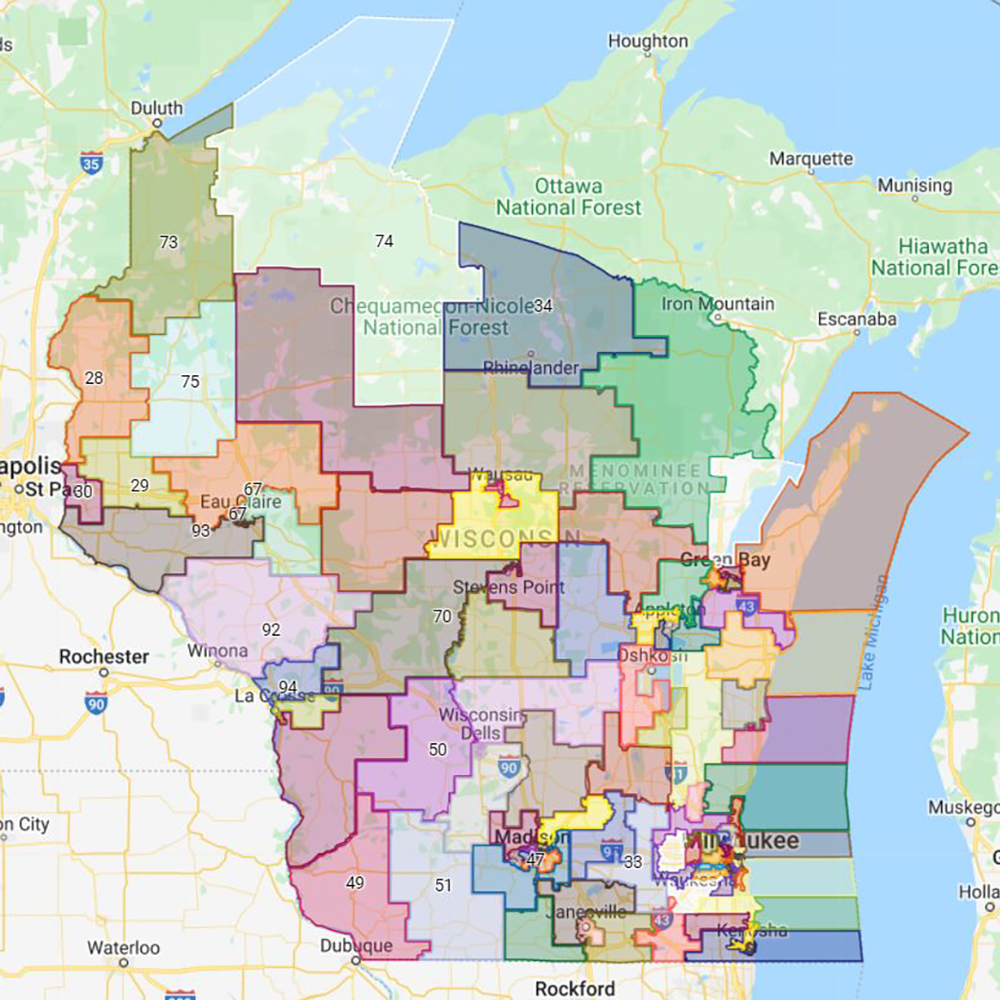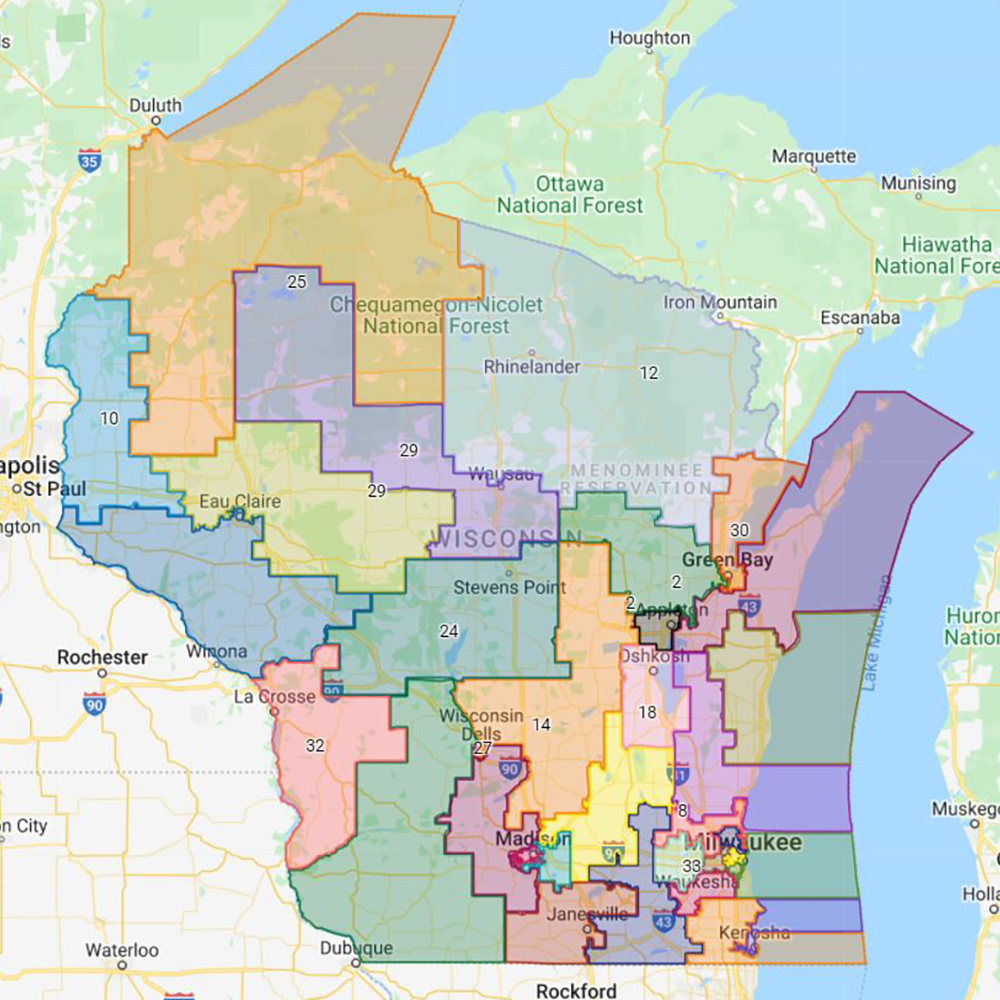US Supreme Court upholds Wisconsin's congressional redistricting, rejects legislative maps
Less than three weeks after the Wisconsin Supreme Court narrowly approved redistricting plans for the state's congressional and legislative districts under a "least change" requirement, the nation's top court ordered the state-level maps be redrawn to align with federal Voting Rights Act requirements.
By Zac Schultz
March 23, 2022

(Credit: Office of Gov. Tony Evers / Google)
The United States Supreme Court ruled March 23 that redistricting maps for the state legislature created by Governor Tony Evers under a Wisconsin Supreme Court-ordered “least change” requirement contain a racial gerrymander. The nation’s top court sent the maps back to the state’s top court, and ordered it to hold proceedings to fix these maps or approve different ones.
At the same time, the U.S. Supreme Court denied a request to overturn the “least change” congressional maps submitted by Evers and approved by a majority on the Wisconsin Supreme Court, meaning those new district boundaries will be in place for the fall 2022 election.

A map shows the “least change” redistricting of congressional seats submitted to the Wisconsin Supreme Court, which approved it in a 4-3 decision. The U.S. Supreme Court denied a request to reject these districts, which means the map will be in place for the 2022 midterm elections. (Credit: Office of Gov. Tony Evers / Google)
The issue at the heart of the legislative maps is whether it was lawful to expand the number of Milwaukee-area Assembly seats with a majority of Black voters. In the maps approved in 2011, there have been six districts with a majority of Black voters. The maps submitted by Evers would increase that number to seven districts, by adjusting the lines and lowering the percentage of Black voters in each district to just above the 50% mark.
After the Wisconsin Supreme Court approved the governor’s “least change” legislative maps, Republican lawmakers and a conservative legal group asked the U.S. Supreme Court to step in, saying the Evers maps illegally used race as a primary factor in drawing the district lines.
Evers and the 4-3 majority on the Wisconsin Supreme Court argued it was possible the Voting Rights Act required the creation of a seventh Black-majority district, but the U.S. Supreme Court ruled that once that federal law was invoked, the creation of new district lines had to be held to a higher level of scrutiny.
The court wrote: “And we have held that if race is the predominant factor motivating the placement of voters in or out of a particular district, the State bears the burden of showing that the design of that district withstands strict scrutiny.”
- A map shows the “least change” redistricting of Wisconsin Assembly seats submitted to the Wisconsin Supreme Court, which approved it in a 4-3 decision. The U.S. Supreme Court subsequently ordered the state court to approve a different plan after finding these maps did not meeting Voting Rights Act requirements. (Credit: Office of Gov. Tony Evers / Google)
- A map shows the “least change” redistricting of Wisconsin Senate seats submitted to the Wisconsin Supreme Court, which approved it in a 4-3 decision. The U.S. Supreme Court subsequently ordered the state court to approve a different plan after finding that the Assembly map — which is the basis for the Senate map — did not meeting Voting Rights Act requirements. (Credit: Office of Gov. Tony Evers / Google)
The decision said Evers and the Wisconsin Supreme Court failed to provide enough evidence they used the Voting Rights Act properly in adding an additional majority Black district, thereby failing the test.
“His main explanation for drawing the seventh majority black district was that there is now a sufficiently large and compact population of black residents to fill it, apparently embracing just the sort of uncritical majority-minority district maximization that we have expressly rejected. He (Evers) provided almost no other evidence or analysis supporting his claim that the VRA required the seven majority-black districts that he drew,” stated the ruling.
Justices Sonia Sotomayor and Elena Kagen dissented.
“The Court’s action today is unprecedented,” wrote Sotomayor. “In an emergency posture, the Court summarily overturns a Wisconsin Supreme Court decision resolving a conflict over the State’s redistricting, a decision rendered after a 5-month process involving all interested stakeholders. Despite the fact that summary reversals are generally reserved for decisions in violation of settled law, the Court today faults the State Supreme Court for its failure to comply with an obligation that, under existing precedent, is hazy at best.”
The issue of the legislative maps now returns to the Wisconsin Supreme Court, which may pursue a number of options.
“On remand, the court is free to take additional evidence if it prefers to reconsider the Governor’s maps rather than choose from among the other submissions,” stated the U.S. Supreme Court’s order.
Essentially, the Wisconsin high court can ask parties to submit a revised version of the Evers maps that would keep the number of majority Black districts at six, or it could reverse its earlier decision and choose the maps submitted by the Republicans in the state Legislature, which contained six black districts in Milwaukee.
The outcome of that decision could have considerable effects in Wisconsin politics. Either way, Republicans are expected to maintain control of the Legislature, but Evers’ maps were slightly more favorable to Democrats and were expected to narrow a Republican majority in the Assembly.
 Passport
Passport













Follow Us